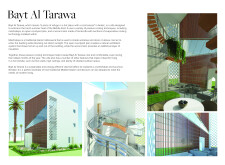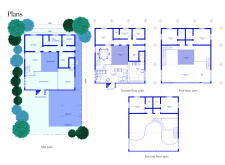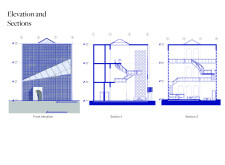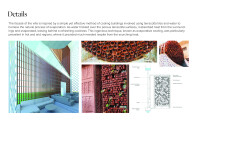5 key facts about this project
### Bayt Al Tarawa: Architectural Overview
Bayt Al Tarawa, located in a region with extreme summer heat, exemplifies a synthesis of traditional Middle Eastern architectural concepts and contemporary living requirements. The design prioritizes passive cooling techniques, utilizing natural ventilation and sustainable materials to create a refuge that aligns with the local climate. The villa’s layout incorporates a central courtyard, which is integral for facilitating cross-ventilation and enhancing indoor air quality.
### Materiality and Thermal Performance
The exterior of Bayt Al Tarawa is clad in terracotta tiles, selected for their thermal properties, which assist in heat absorption and promote evaporative cooling. Traditional mashrabiya latticework allows for light penetration while ensuring shade and privacy. Structurally, concrete provides robustness and enables distinctive architectural elements, complemented by large glass panels that foster indoor-outdoor connections and contribute to passive solar heating. Steel components in the staircase and support structures enhance durability while introducing a contemporary aesthetic. The landscaping, featuring strategic greenery, plays a critical role in microclimate control and enhancing visual appeal.
### Passive Cooling and Functionality
The villa employs advanced passive cooling strategies, utilizing the properties of terracotta and mashrabiya to optimize airflow while deflecting direct sunlight. An innovative evaporative cooling system is integrated, wherein water pooling on the terracotta tiles facilitates heat absorption through evaporation, markedly lowering indoor temperatures. The thoughtful spatial arrangement includes defined areas for living, dining, and private quarters, incorporating a dedicated majlis to reflect Middle Eastern hospitality traditions. This design not only addresses contemporary lifestyle demands but also significantly reduces energy consumption, underscoring a commitment to sustainability and minimal reliance on mechanical cooling.
Situated within a challenging climatic context, Bayt Al Tarawa serves as a pertinent reference for similar architectural endeavors, harmonizing modern functionality with cultural significance.






















































